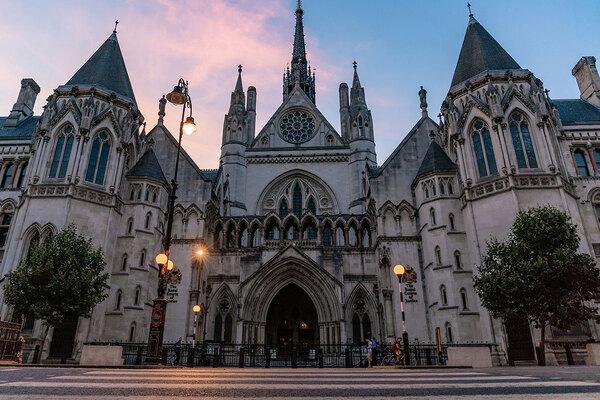
Deadly heatwaves are coming. Those involved in housing must pay attention
A startling heat wave in Canada offers a disturbing vision of our future. Housing – and housing providers – must brace for the risk of deadly heat, writes David Ireland
The blistering heatwave that hit Canada and the north-western United States this summer is unparalleled. British Columbia, which experienced the highest temperatures, generally has a benign climate not dissimilar to the UK.
But, this summer, temperature records were shattered. A peak of nearly 50°C was recorded, 35°C above the average for the time of year.
Science tells us heatwaves will become more frequent and more extreme as the climate emergency advances, so it’s not impossible, and probably inevitable, that similar heatwaves will strike the UK in the future.
In 2003, a serious heatwave hit Europe. It was not nearly as hot as the Canadian one this year, but still caused an estimated 70,000 deaths. Are we prepared for something even more extreme? And what can we learn from places that already experience life-threatening heat?
The human body is an amazingly well-regulated system. Body temperature is maintained very close to 37°C. It’s rare for our bodies to deviate by more than a degree from this norm.
Most of the time, air temperature is much cooler than our body. The body warms itself through digestion and muscle activity. Clothing, buildings and external heating all help us maintain temperature. When the body gets too hot, it loses heat through radiation from the skin and perspiration.
Perspiration works through the evaporation of water – the physical process consumes energy, extracting heat and cooling the skin. It all works beautifully. But at the same time as the Canadian heatwave, something worrying happened that unsettles our faith in this beautiful system.
The Upper Indus Valley in Pakistan is used to hot temperatures, but what happened this year shocked scientists. Temperatures in Jacobabad hit 52°C in June, a local record. But, more significantly, the ‘wet-bulb’ temperature hit a new world record of 38°C.
A wet-bulb thermometer records the temperature once a maximum amount of cooling from evaporation is applied. Drier air permits more evaporation, so wet-bulb temperatures are usually much lower than air temperature.
Until this year, wet-bulb temperatures above human body temperature had never been recorded. In other words, the human body was theoretically capable of maintaining a 37°C temperature anywhere on Earth. That can no longer be said to be the case.
In Pakistan, the peak temperature lasted only a few hours, but a disturbing milestone had been crossed. A large city had experienced conditions that are generally considered unsurvivable even for healthy people.
It is hopefully unlikely that such wet-bulb temperatures will occur in the UK. If we are to prepare for a Canadian-type heatwave, what can we learn from people who experience extreme heat regularly?
In 2017, I visited a number of homes built by The Nubian Vault in the southern Sahel in West Africa. The organisation has revived an ancient building technique of dried mud vaults.
The houses use locally dug clay to create large vaulted buildings that have remarkable qualities in maintaining temperature. Outside, it can range from around 10°C at night to 45°C during the day, but inside, the temperature fluctuates around 25°C all day and night. The secret is thermal mass.
The huge, thick walls and ceilings create a protective barrier from the sun. During the day, the outside walls warm up, but at a far slower rate than the air. Inside the building, the walls absorb heat from the air in the rooms, keeping them at a comfortable and even temperature.
Simple clay and bamboo houses I visited in the Indus Valley in Pakistan use a similar thermal-mass principle. They have relatively high ceilings and roof vents. This allows hot, moist air to rise and escape, drawing in drier air from ground level. While the fresh air is still hot, it has a lower wet-bulb temperature, allowing the body’s perspiration cooling system to work better.
The developer of these houses, the Heritage Foundation of Pakistan, has in recent years planted what it calls mini-forests in its villages. We would probably describe them as large herbaceous borders. Their effect is important.
Not only do the plants create shade from the sun, the transpiration process on the leaves works in a similar way to perspiration. It noticeably reduces the air temperature around them. When 1°C or 2°C can be the difference between life and death, a herbaceous border is no longer a lifestyle feature, it’s a life saver.
Perhaps most significantly, giving people early warning and allowing them to prepare for heatwaves can save lives. In the 2003 heatwave, it was found that people living in upper-floor apartments in France had the highest fatality rates.
With poor ventilation and no advice about what to do, convection currents propelled hot air from the whole building upwards, heating the upper apartments to dangerous levels.
A project in Gilgit-Baltistan in Pakistan led by the Aga Khan Agency for Habitat uses indigenous knowledge combined with the latest satellite and scientific data.
It warns remote communities about a variety of climate-related risks. Well-prepared people are better able to get provisions in and stay indoors with lots of ventilation and hydration during the heat of the day. Vulnerable people can be checked in on and looked after.
Like Canada, the UK does not have experience of life-threatening heat to draw on. Most of our buildings have been built without heatwaves in mind. Fortunately, there are places in heat-affected countries that have developed knowledge over generations that we can learn from. The lesson from Canada is that we may need this knowledge much sooner than we thought.
David Ireland, chief executive, World Habitat
Sign up for our asset management newsletter
Already have an account? Click here to manage your newsletters












